ML usage in wealth management is a growing trend. Approximately 50% of S&P 500 earnings calls have included references to AI and ML since May 2023. Asset and wealth management is yet in the early adoption stage of ML.
In this blog, we’ll review some of the most beneficial techniques for the A&WM industry.
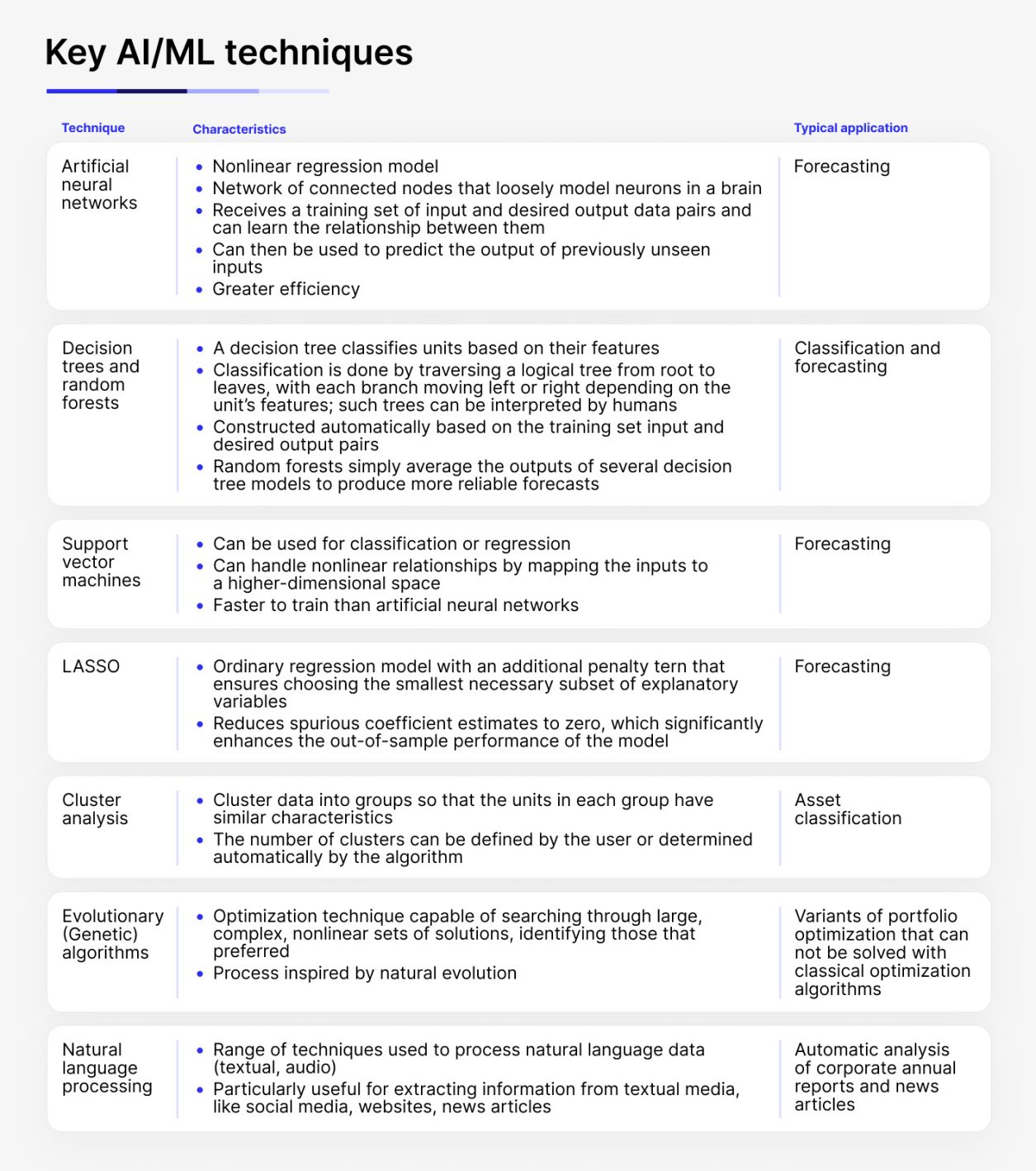
Key AI/AM techniques
AI and ML in asset management
AI can be used to construct portfolios that meet performance targets better than those created using traditional methods.
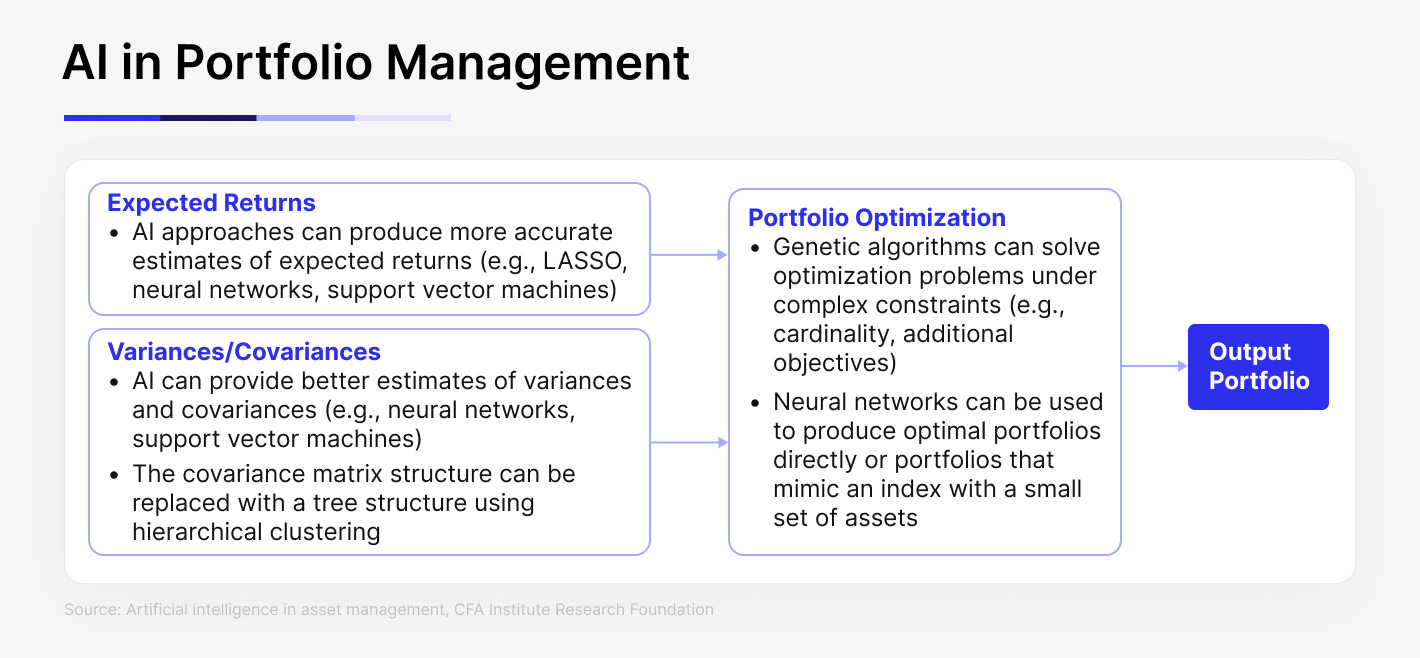
AI in portfolio management
Portfolio management
NLP approaches
NLP approaches are capable of extracting economically meaningful information from various sources of text, such as corporate annual reports, news articles, and Twitter posts. AI approaches can also interpret context and sentence structure.
Traditional approach is basically manual labor. An advisor has to analyze dozens, if not hundreds of 20-30-paged reports.
NLP can also be used for:
- asset revenue and risk estimation,
- portfolio creation from scratch,
- rebalancing using derivatives.
Using AI, the advisor is able to boost their performance and give optimal advice faster.
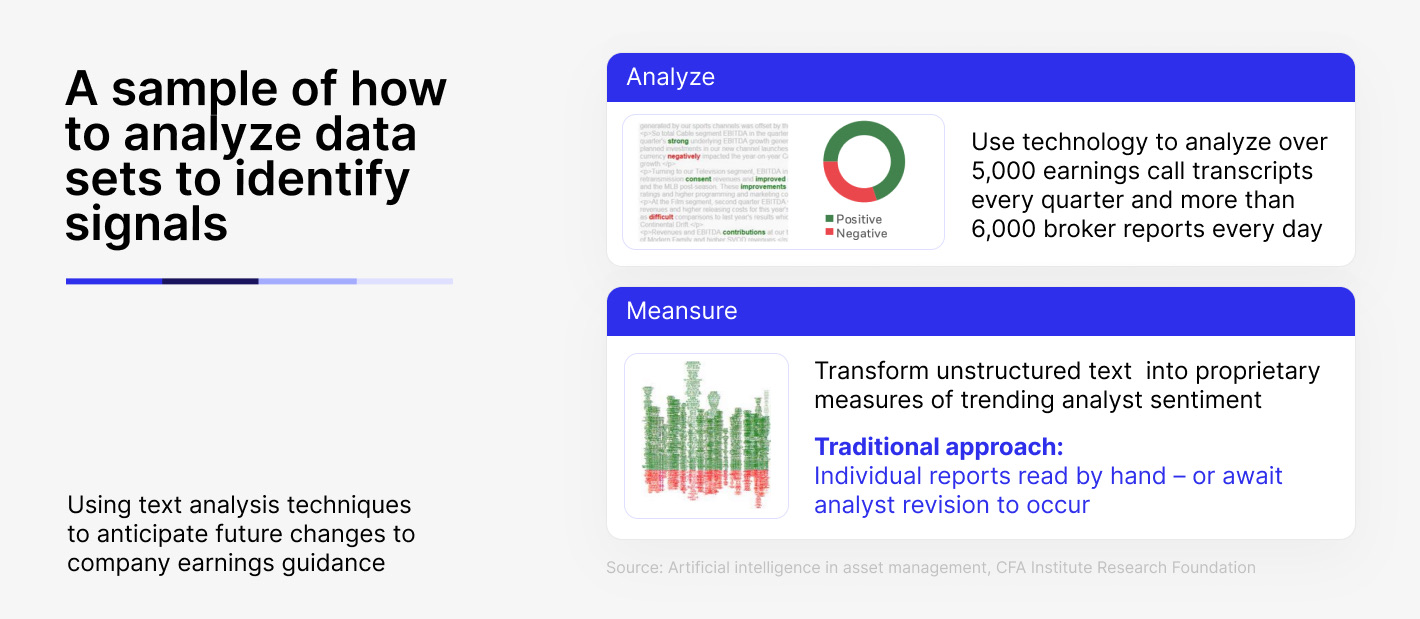
NLP approach work sample
Morgan Stanley use case
For example, earlier this year, Morgan Stanley deployed OpenAI’s GPT-4 to empower their wealth management advisors with a new way to utilize the company’s vast intellectual capital. Advisors can get answers to specific questions by asking the AI instead of searching through PDFs on internal websites. The AI provides plain English answers with links to source documents.
“You essentially have the knowledge of the most knowledgeable person in Wealth Management—instantly,” says Jeff McMillan, the company’s Head of Analytics, Data & Innovation
Sombra case study
After more than a decade of a low-interest rate environment, inflation picked up, and the Fed responded with an increase in interest rates. However, since September 2023, the market data remains mixed, with no clear sight of the following FOMC steps.
Major Bulge Bracket Banks are divided on their view on the future rate path. It’s puzzling to see traders betting the seventh time’s the charm when it comes to the Fed pivoting from rate hikes to cuts, given that officials have repeatedly said their fight against inflation is far from over.
Business challenge. Since March 2022, almost all the client’s asset classes have performed poorly while the correlation between fixed-income assets and equities has surged, rendering fixed-income ineffective in its role as a hedging tool. As a result, a classic 60/40 portfolio resulted in roughly the same performance as the S&P 500 Index.
Sombra approach. We applied Loughran-McDonald sentiment word lists and BERT and XLNet ML techniques for NLP to FOMC statements to see if they anticipated changes in the federal funds rate and then examined whether our results had any correlation with stock market performance.
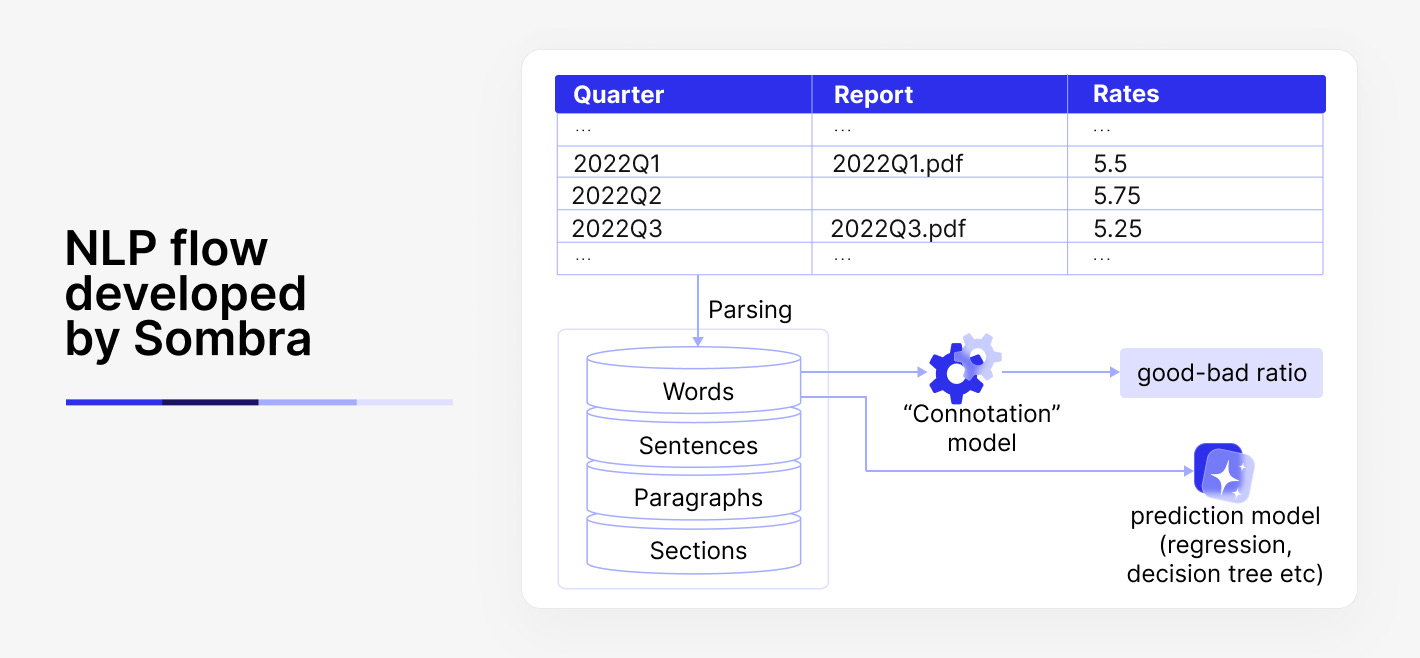
NLP flow developed by Sombra
Value for the client. With the value of asset diversification diminished and global investment firms polarized on their view on the further Fed rate movement, achieving an objective and quantifiable understanding of the Federal Open Market Committee’s (FOMC) outlook has grown ever more critical.
Start capitalizing on machine learning opportunities today with Sombra’s wealth management services. Let us know what your business problem is
The LASSO framework
The LASSO framework can also be used to find lead–lag relationships between asset groups or markets.
Traditional approach here embodies a regular linear regression, which shows the correlation between the assets based on historical data. The main disadvantage of this approach is regression results being sensitive to:
- Timespan of the historical data. The regression of the last 10 and 20 years will have different values.
- Date of the analysis’ start. The correlation value would be higher at the beginning of a crisis and lower during a calm environment.
Neural networks
Neural networks are one of the most popular AI techniques for predicting stock returns, company fundamentals, and returns of other asset classes such as bonds.
Traditional approach lies in manual historical data observation. This approach shares the same drawbacks as using linear regression instead of the LASSO framework, apart from
- manually building financial models (DCF),
- being subjective,
- time-consuming.
Nvidia case study
A WM research firm’s technology stack generates return-predictive signals for thousands of securities, multiple times a day. Powered by multiple DGX Stations and GPUs. Transitioning from CPU to GPU HPC environment significantly accelerated R&D – cutting computation time by more than 80%.
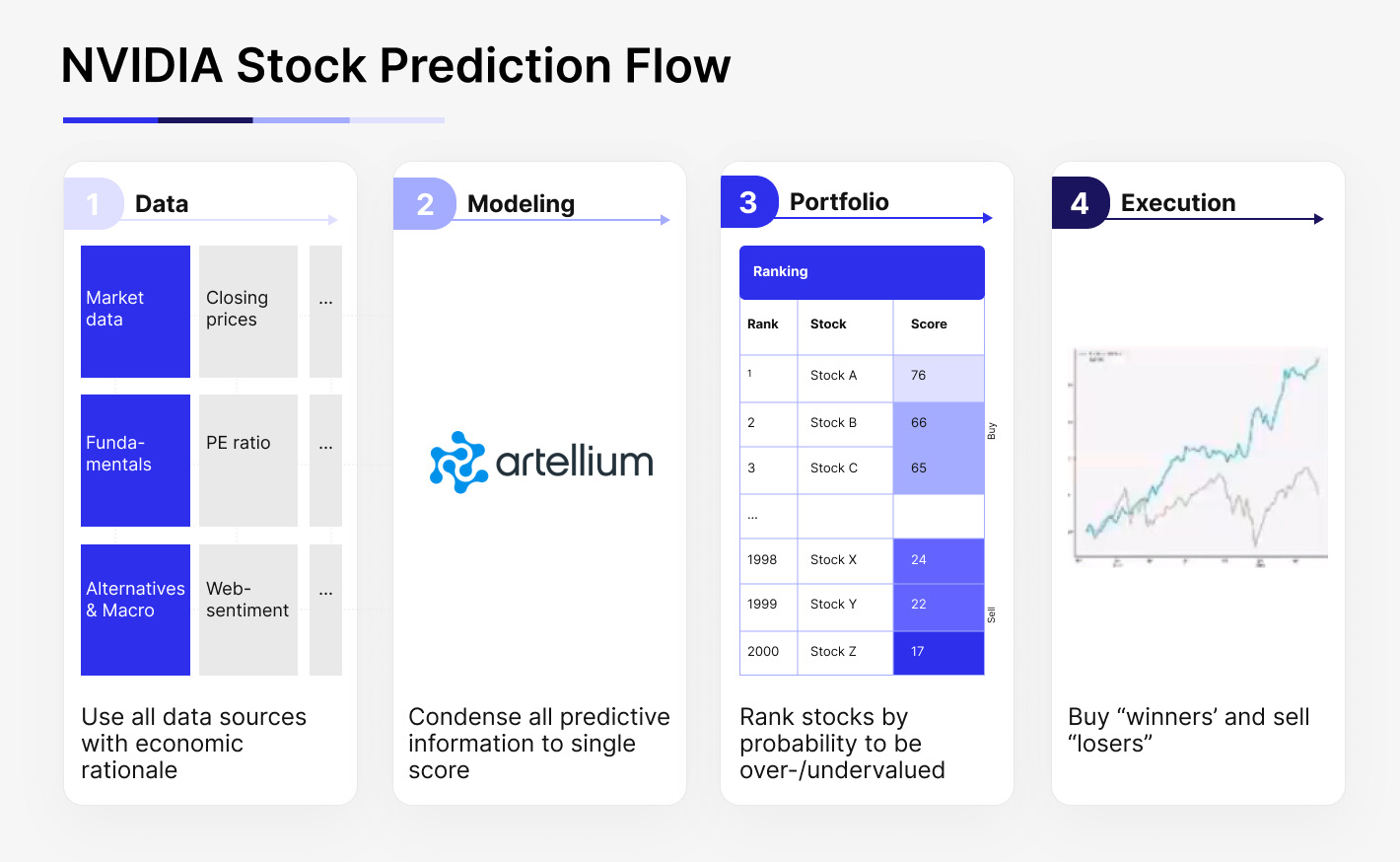
Stock prediction flow
Artificial neural networks
ANNs can be used for pricing and hedging using nonparametric option pricing frameworks that perform better than the Black–Scholes model in terms of delta hedging and forecasting future option prices.
The drawback of traditional approach includes
- too many variables (greeks),
- the variables change constantly,
- requires recalculation.
ANNs, on the contrary, can also be used for rebalancing using derivatives. They ease the estimation of delta and gamma hedging.
Portfolio optimization
AI can generate more accurate returns and risk estimates for traditional portfolio construction.
The main advantage is that AI/Ml techniques promise a higher risk-adjusted return.
Additionally, AI techniques can provide alternative portfolio construction approaches to generate more accurate portfolio weights and produce optimized portfolios with better out-of-sample performance than those generated.
Have an idea to implement ML in your asset management business? Let’s start this project together!
Trading
Algorithms can play a role in all stages of the trading process.
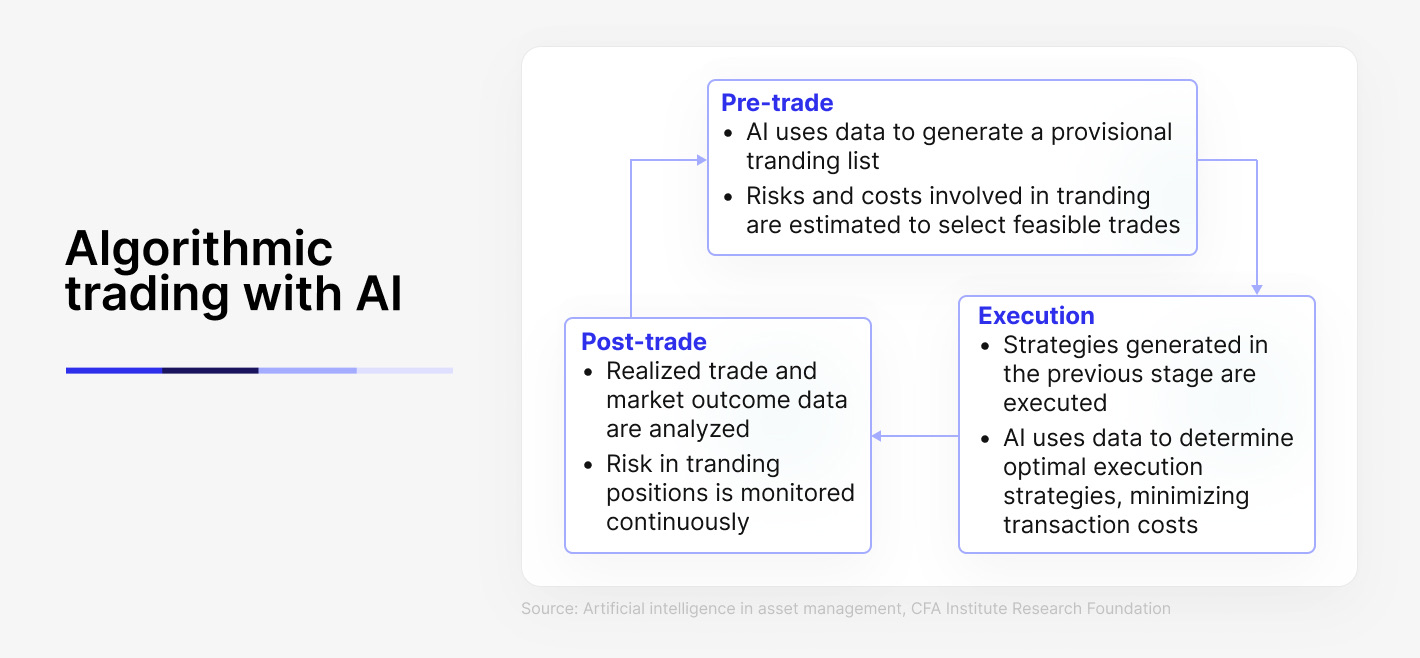
Algorithmic trading with AI
Portfolio risk management
AI also has applications in risk management, with regard to both market risk and credit risk.
Gamestop case study
Many funds began monitoring social media and tracking sentiment of specific stocks after the Gamestop mania hit Wall Street.
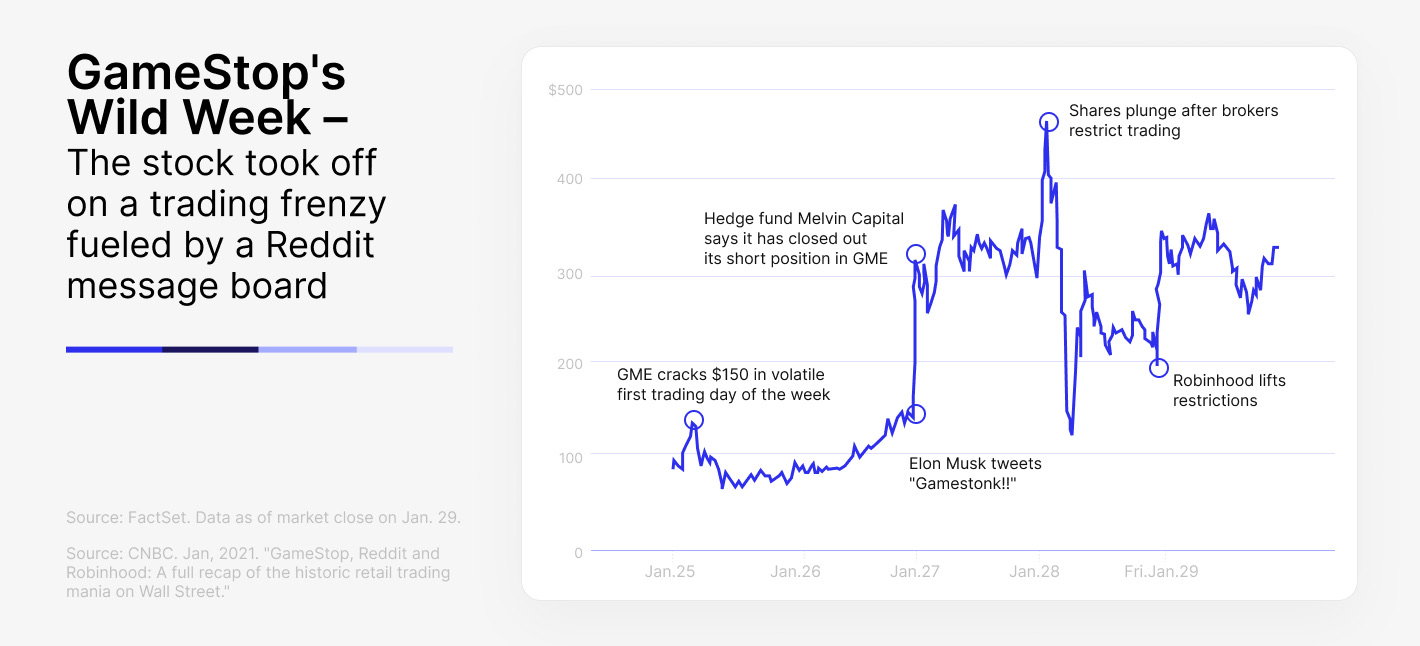
Gamestop: timeline of events
Primarily, the funds used NLP techniques to do social listening. Sombra engineers can help you utilize financial opinions, posts, and reports in the most efficient way using machine learning techniques.
Conclusion
The A&WM industry would only benefit from the adoption of AI/Ml techniques. Most significantly from:
- NLP approaches
- The LASSO framework
- Neural networks
- ANNs
The application varies from portfolio creation and optimization to risk management and trading.
At Sombra, we offer ML and AI services to asset and wealth management companies seeking to boost the efficiency of their software products. To learn more – contact us.











